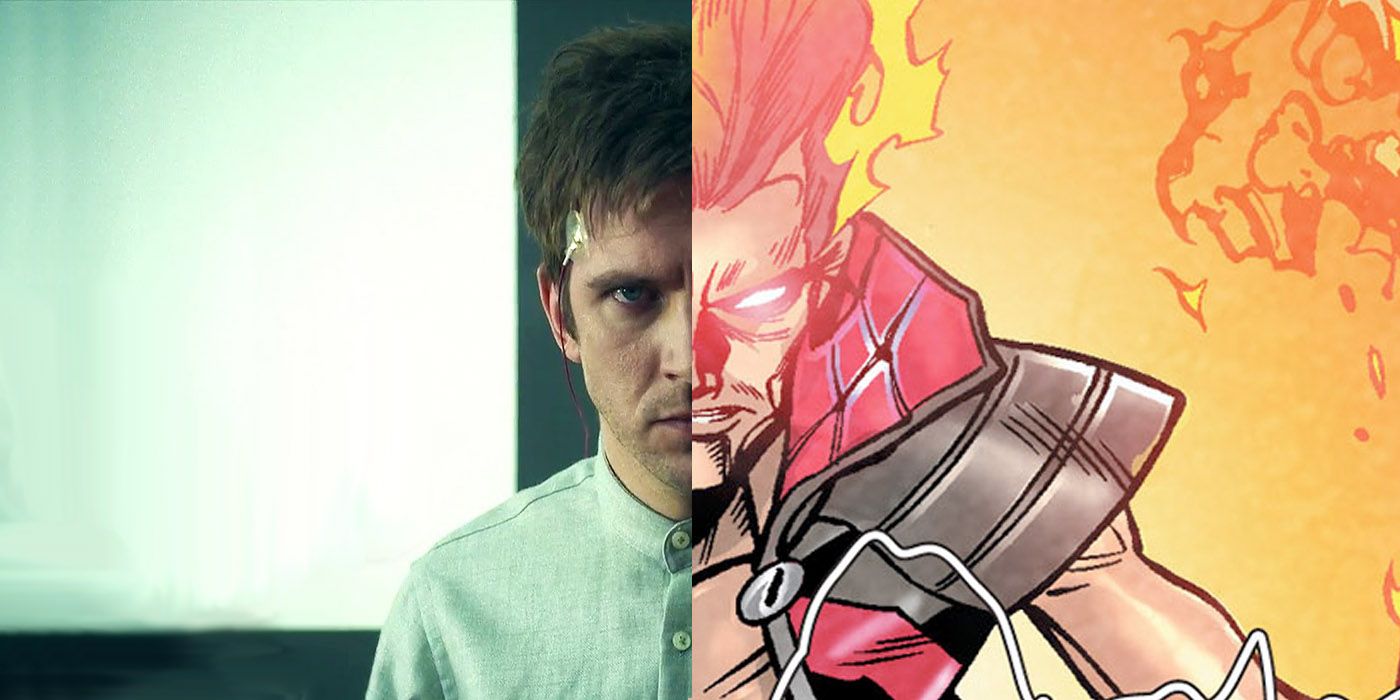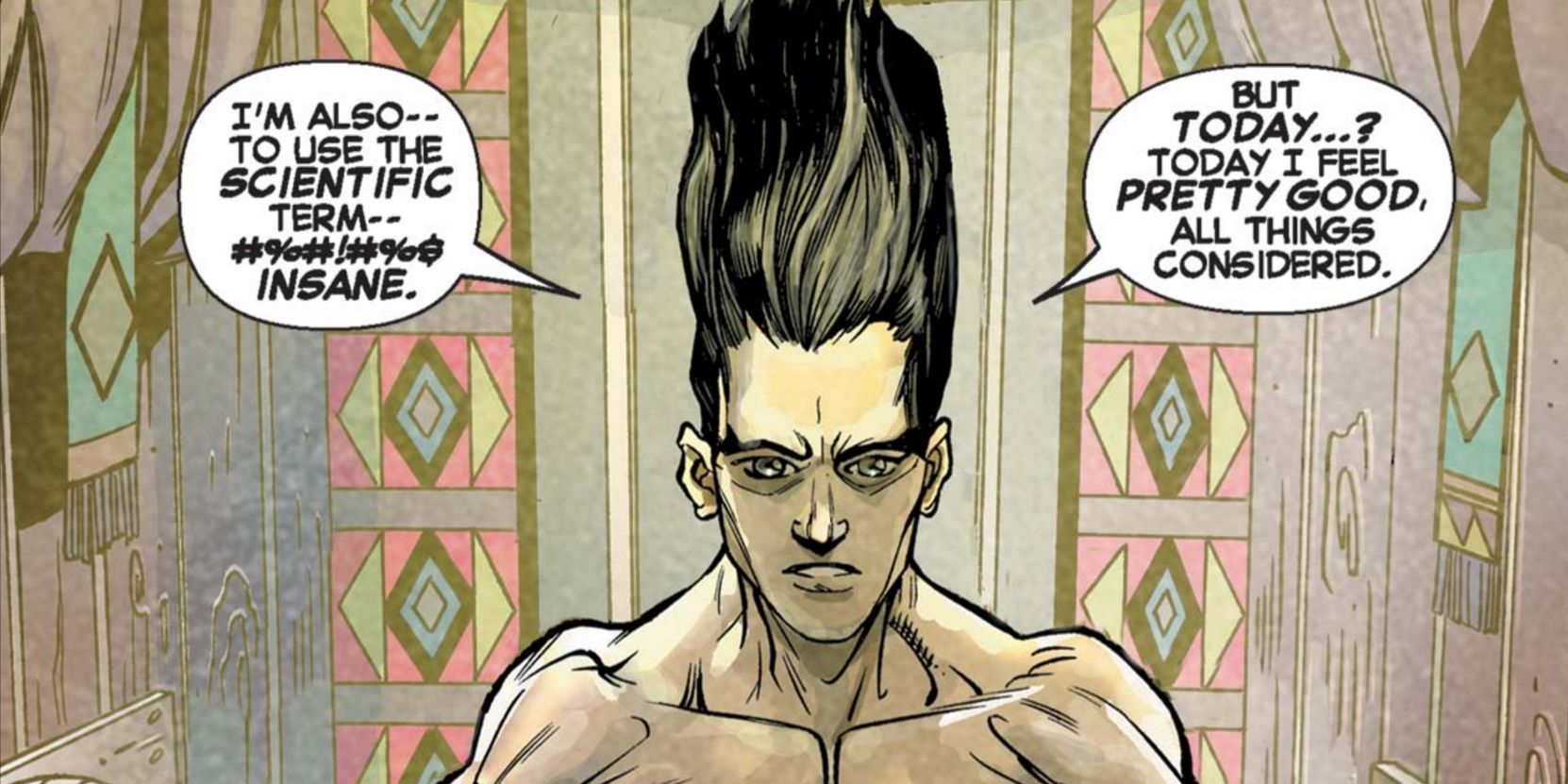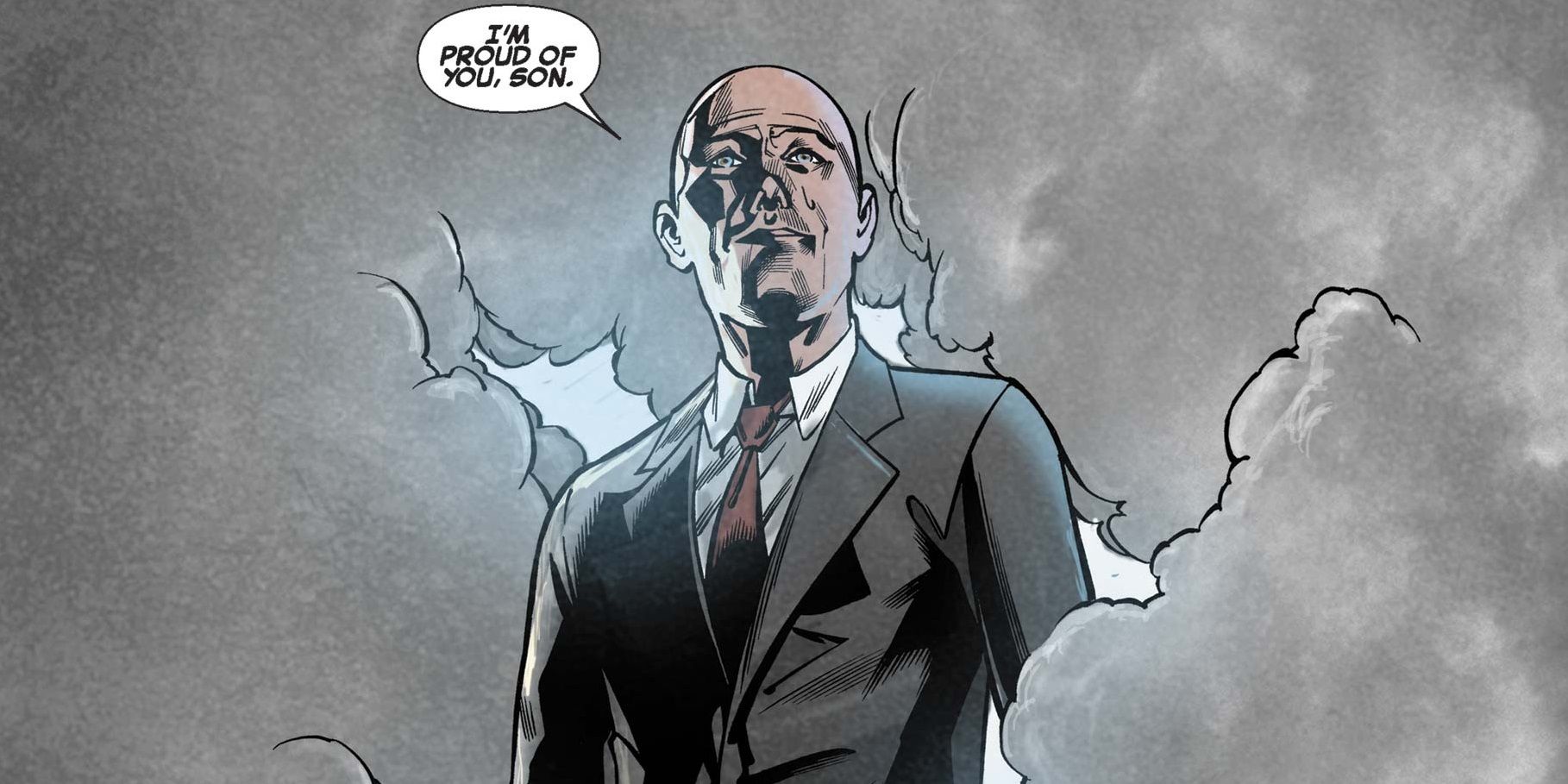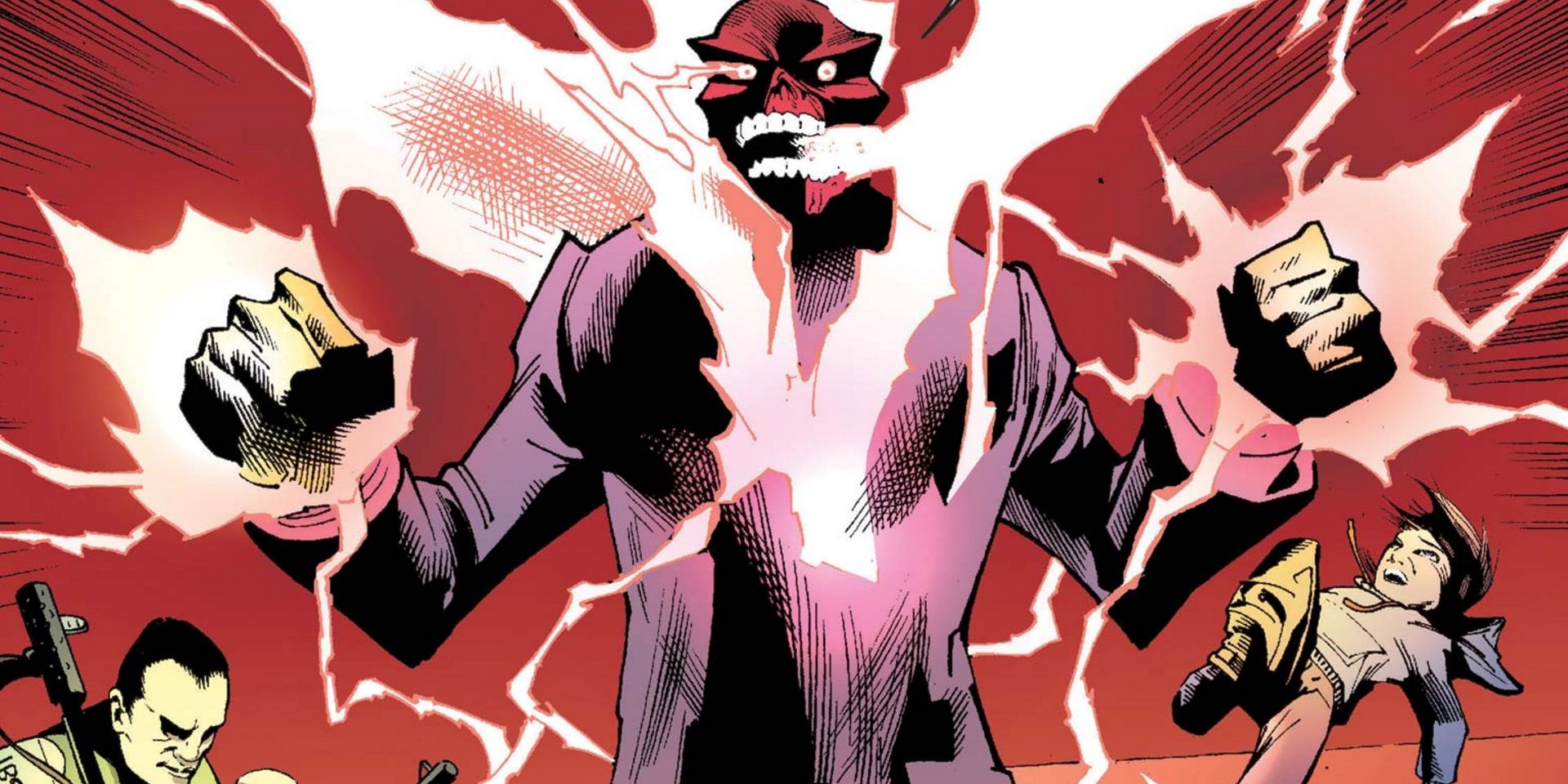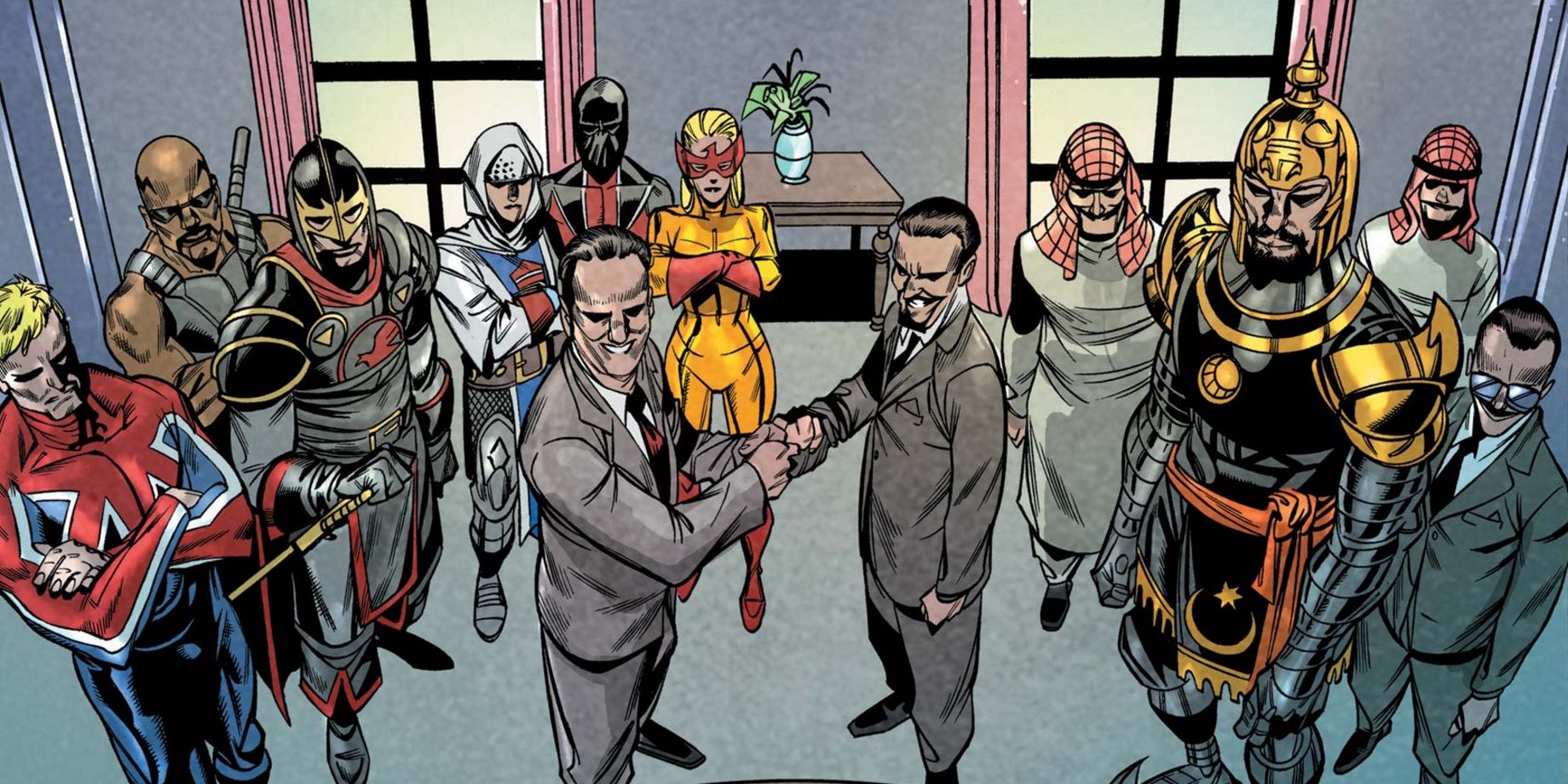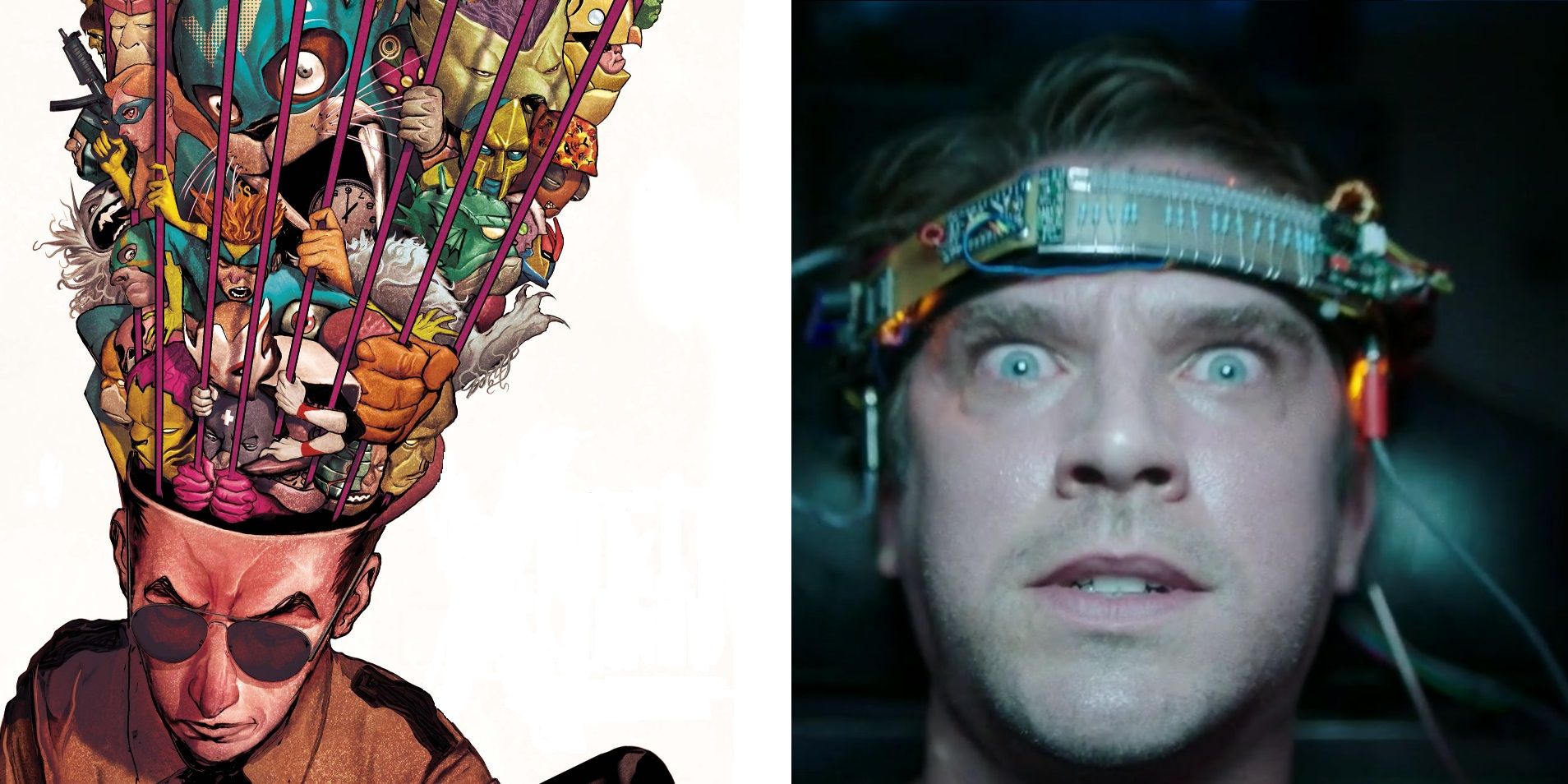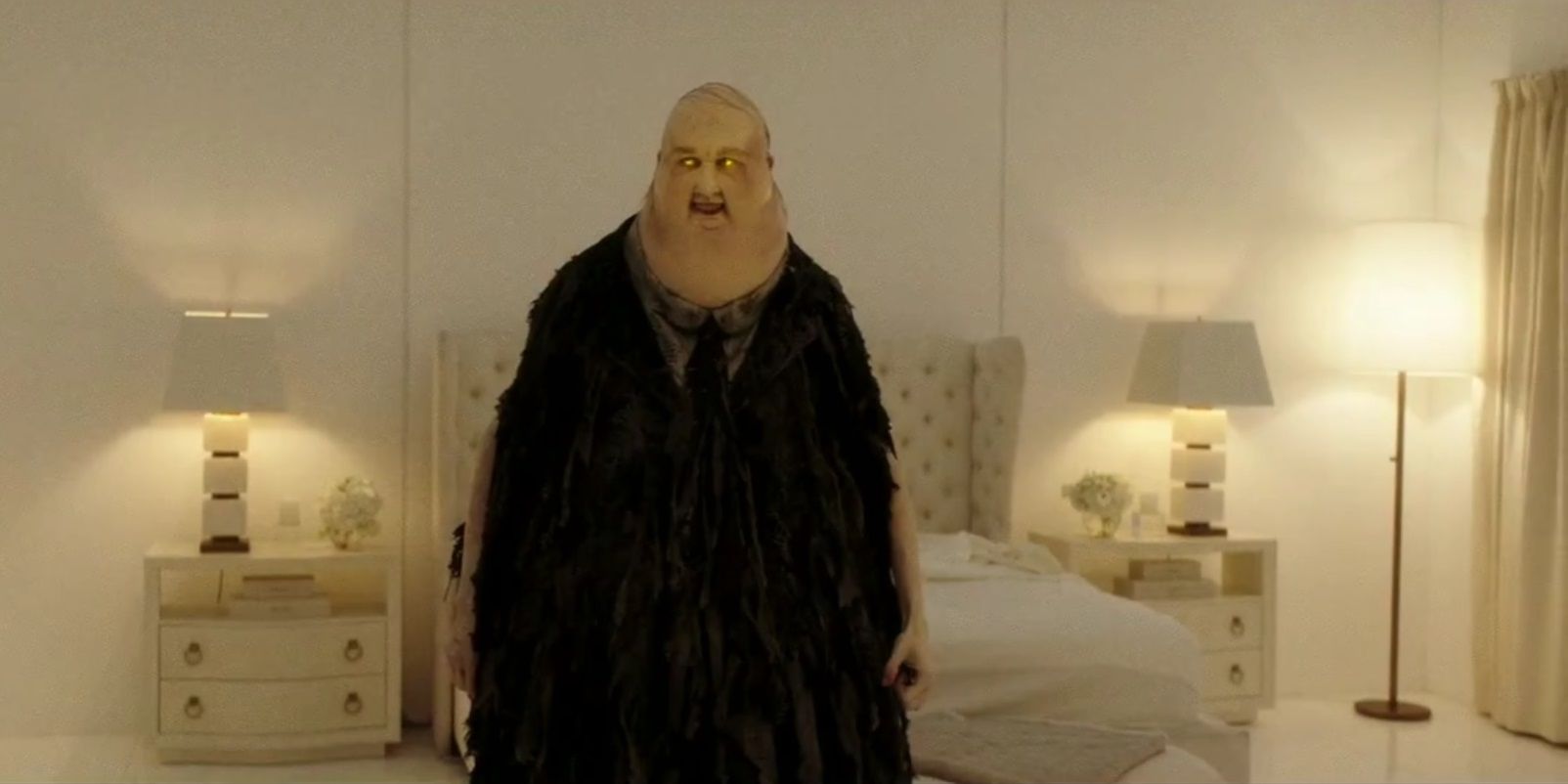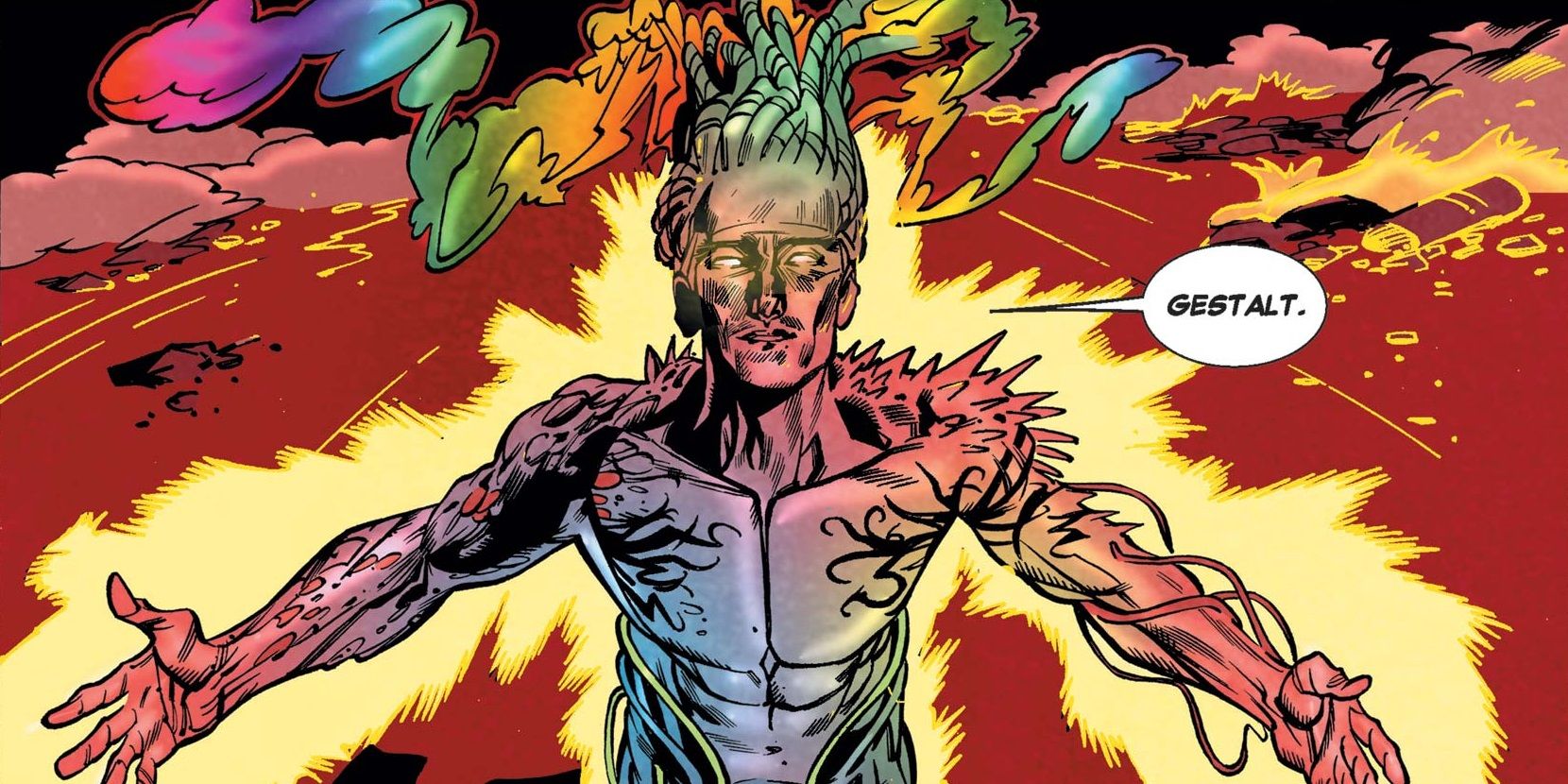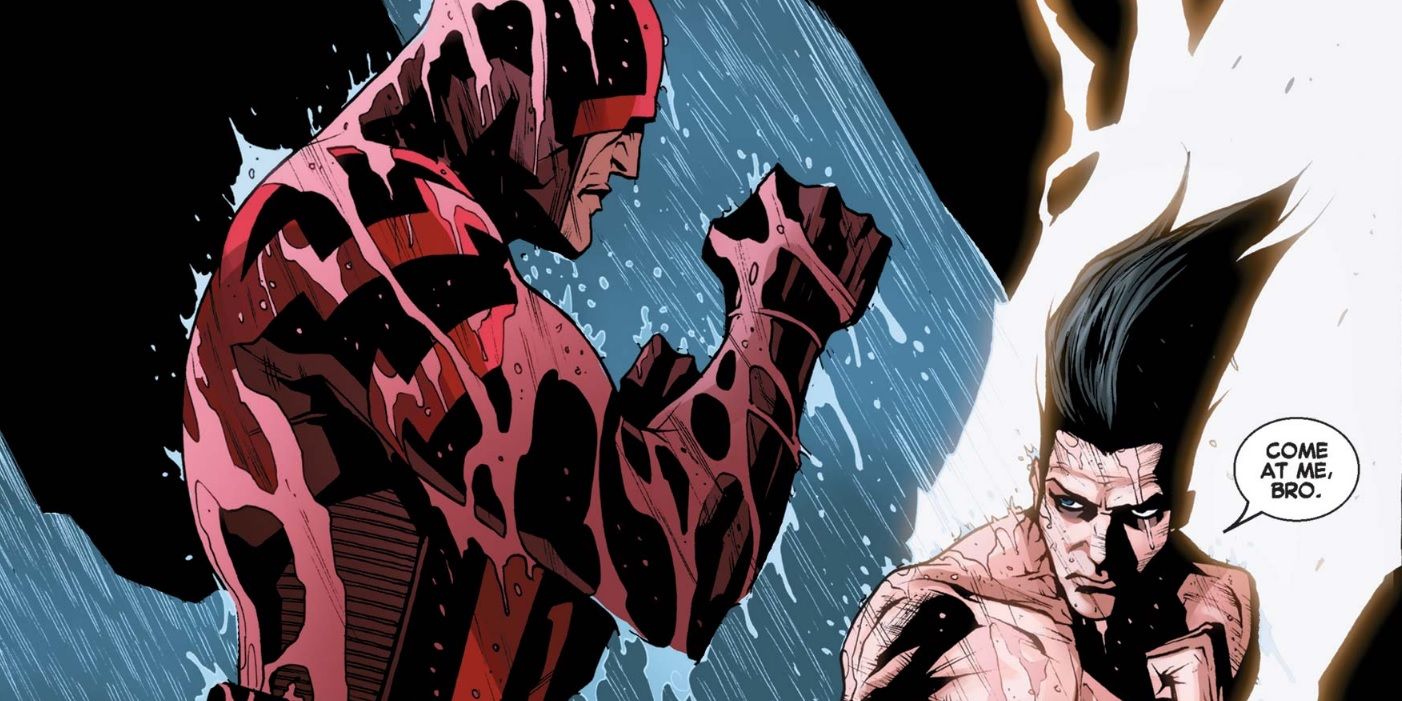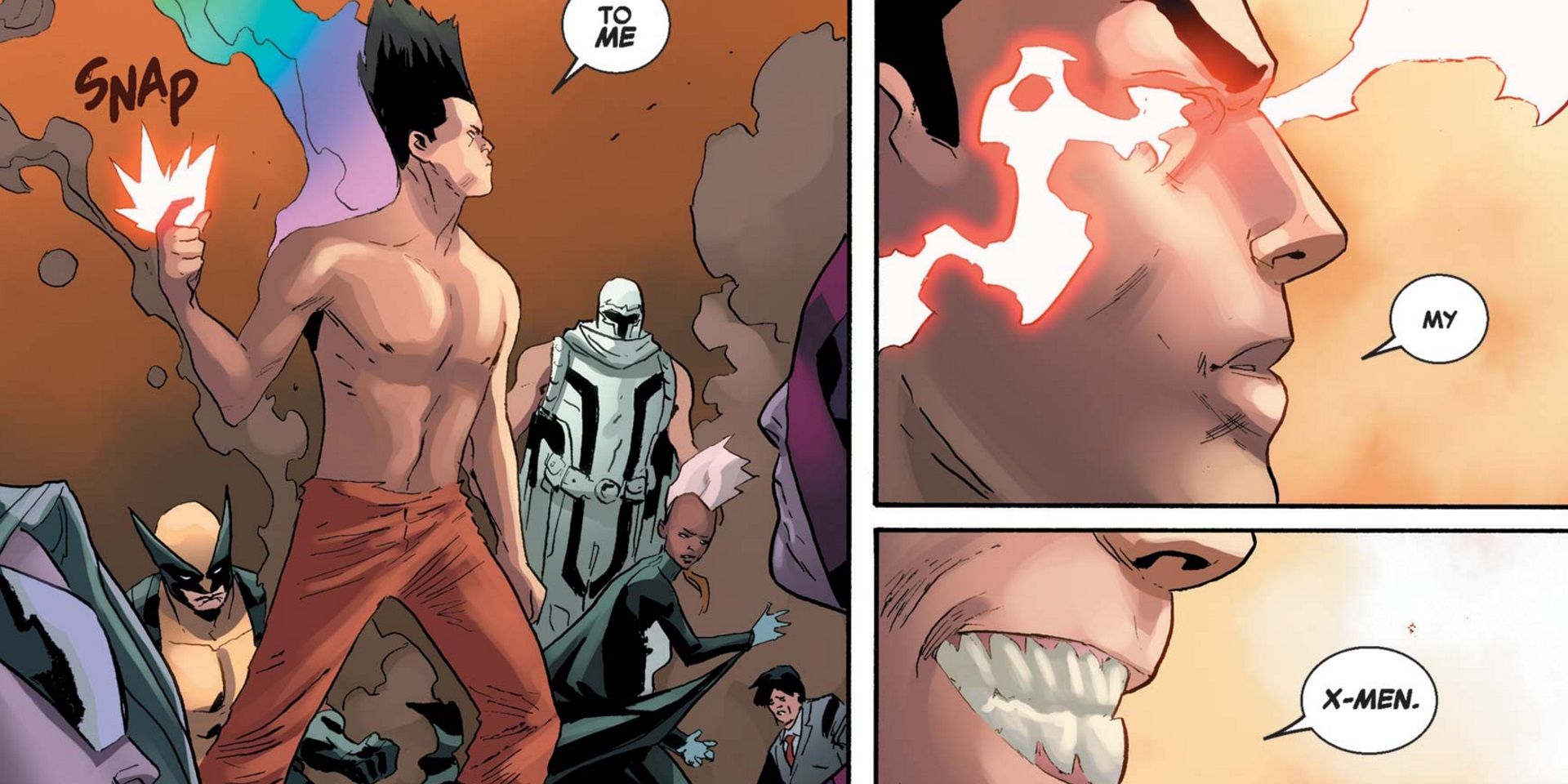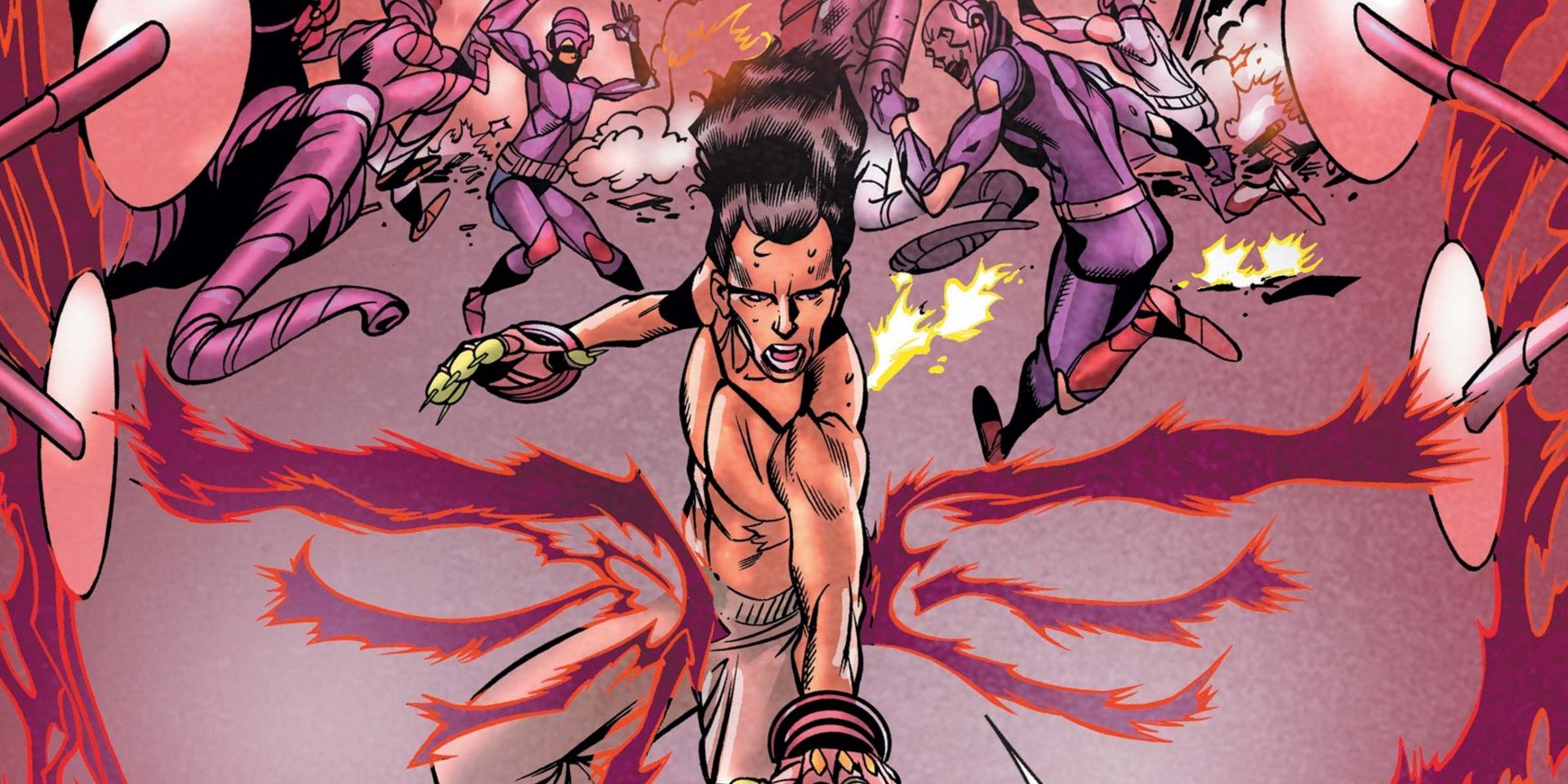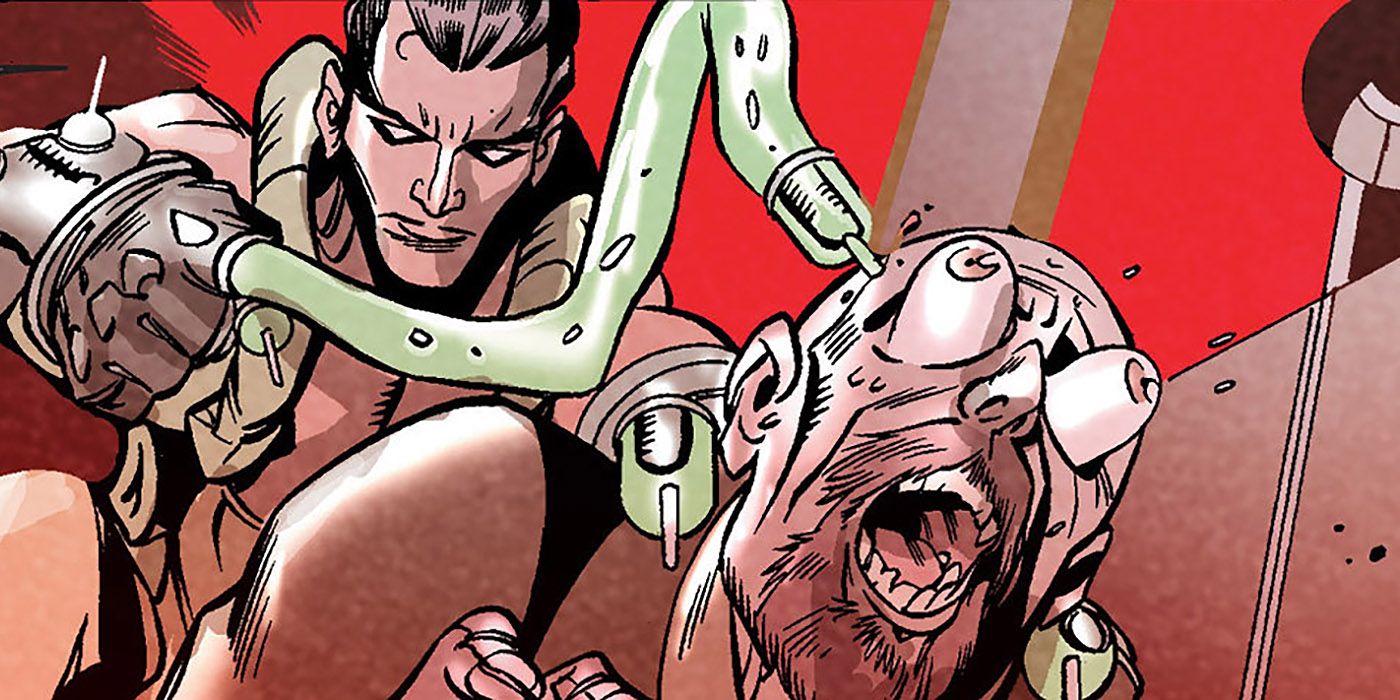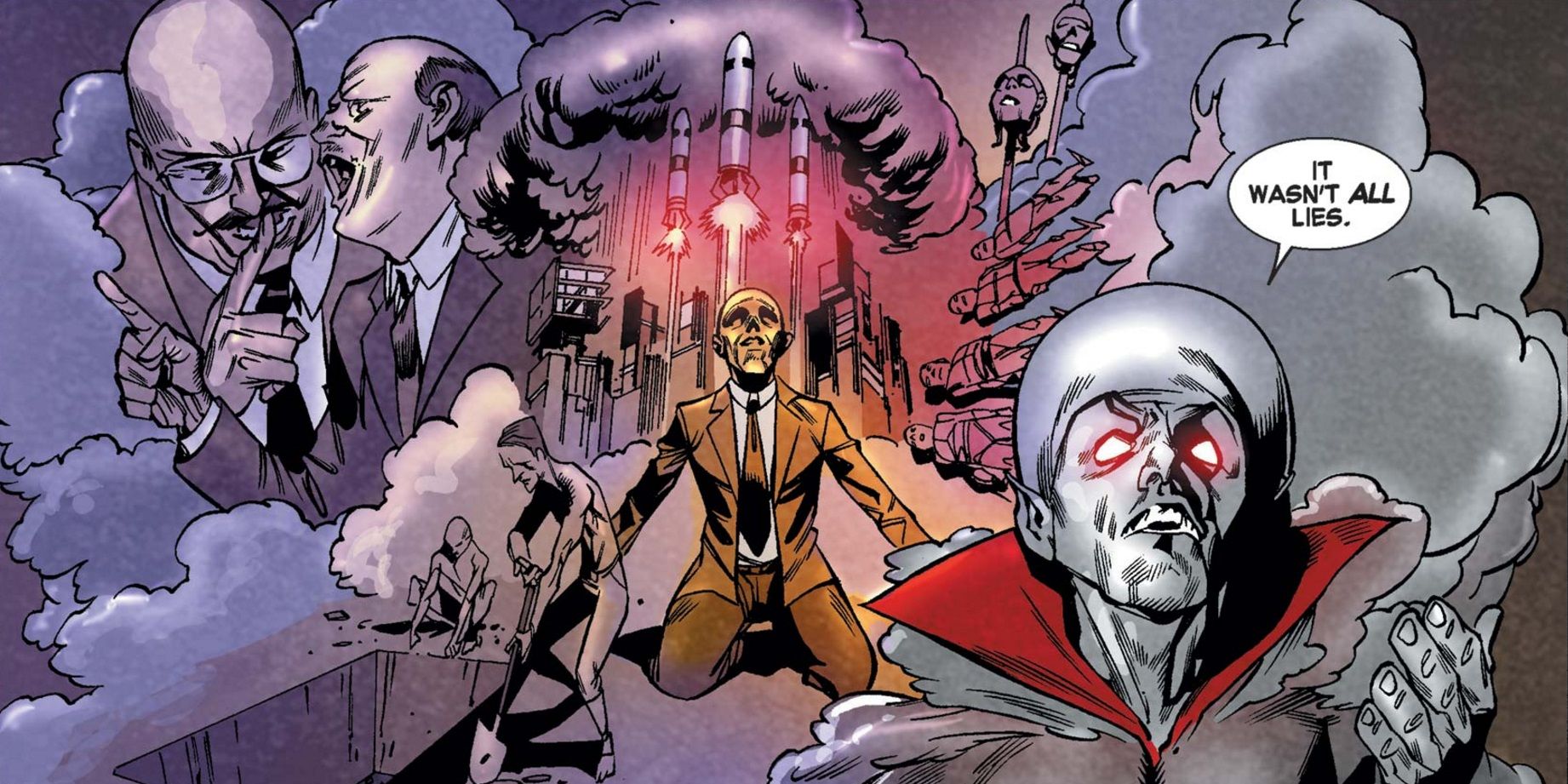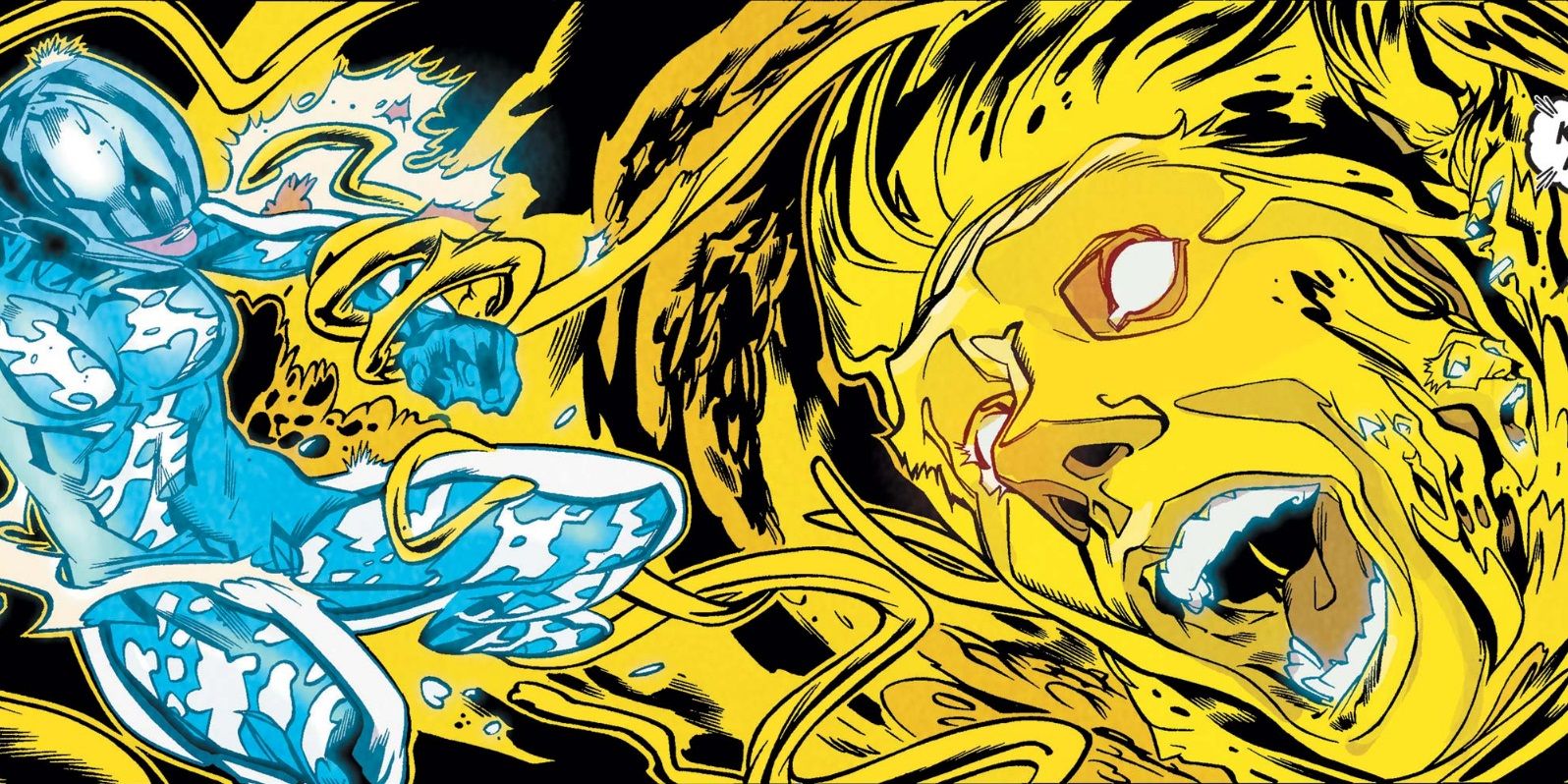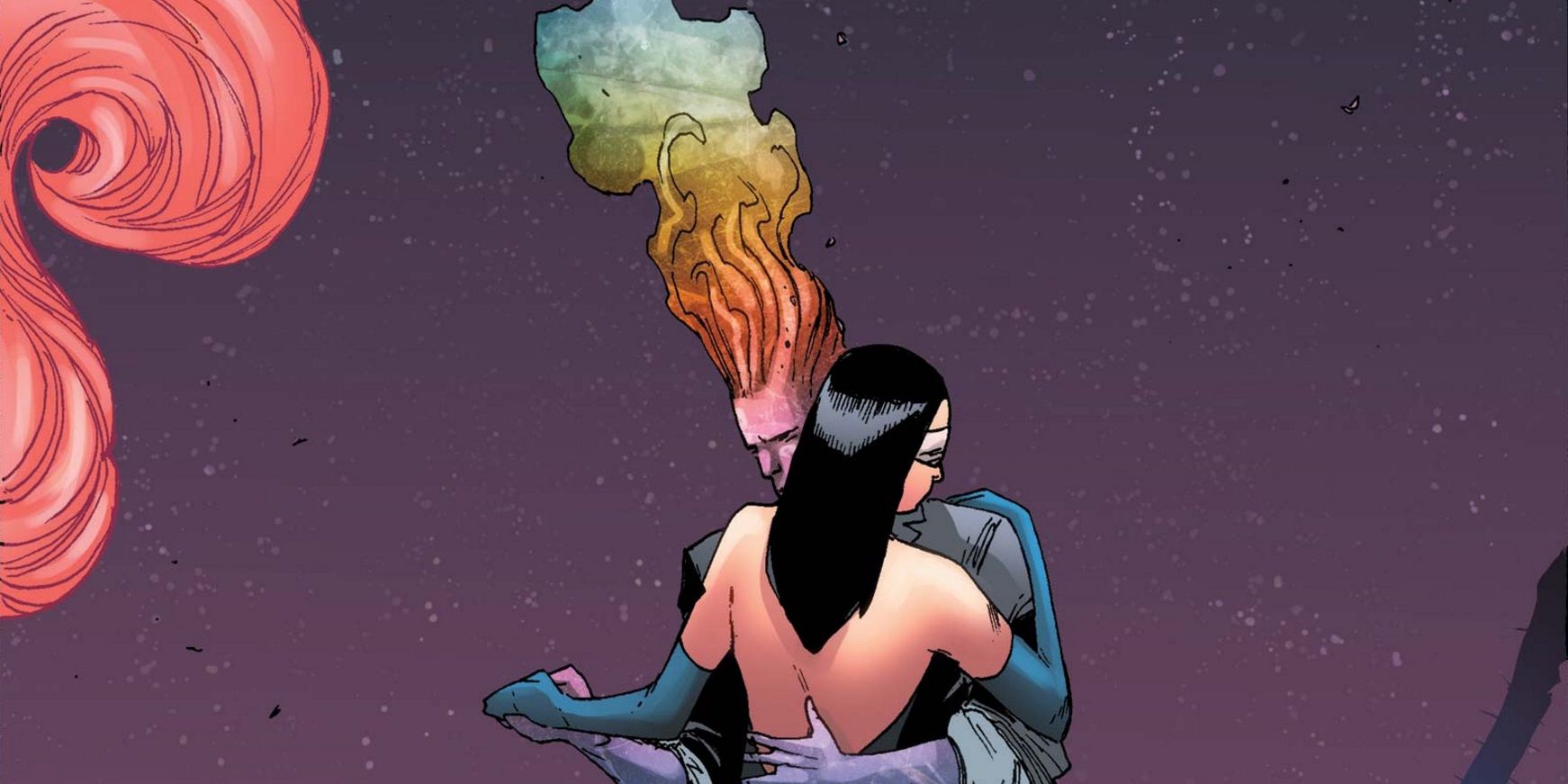Like Logan before it, instant cult hit television show Legion features a traditional Marvel character, and uses a classic Marvel storyline as a sort of jumping off point. While X-Men: Legacy was the inspiration for Legion, the two wind up sharing little more than a version of the same main character (and possibly patrilineal heritage). It is important to note that each is its own creative entity, and the two do not have to be twins.
X-Men: Legacy ran for 25 issues written by Simon Spurrier in 2012-- although the last issue didn’t have to do with Legion. What is in this article will spoil both the comic and the show, but make no mistake: both of them are still worth checking out even after you know their ins and outs. And now, the 15 Biggest Differences Between Legion And X-Men: Legacy. Of course, just one season of Legion (and just eight episodes, at that) has been released so far-- so it is entirely possible for some of this stuff to still happen.
15. Point of Origin
David Haller, in the show Legion, is an American mutant. He is played by Dan Stevens, a British actor. To keep things surreal, Haller’s ‘rational self’ was introduced as a British version of himself.
Haller in the comic books has a slightly more confusing backstory. He is half-American (on his father’s side) and half-Israeli in the books; he was conceived after his father, Professor X, helped Gabrielle Haller, his mother, out of her coma, and the two fell in love. At the time of the book, Gabrielle worked at the Israeli Embassy in England. Being a mentally ill, all-powerful mutant, David was actually raised/monitored on Muir Island-- an island off the coast of Scotland that housed a research facility - where he was the ward of the head researcher, Dr. Moira MacTaggart. As such, Haller talks like a Scotsman in the book. This is awfully convenient, as writer Simon Spurrier is British and very obviously familiar with Scottish/British slang.
14. The Legacy in Legacy
It took nearly a full season, but the David Haller of the show came to the conclusion that his father was a powerful mutant himself. It has not been revealed who it is yet, but for people that know their comic history, it does seem to be pointing to the same truth as the comics-- David Haller is the son of Professor X. The biggest clue outside of the fact that Haller’s father is a powerful psychic mutant is the intimation that he had a great battle with the Shadow King, who Xavier counts as one of his greatest foes in the comics.
The comic book Haller has no such mystery about him. The name of the series, X-Men: Legacy, refers to David Haller finding his way in the world in the shadow of his father. Xavier, in the book, had just recently been murdered by Cyclops (who was possessed by one-fifth of the cosmic Phoenix Force and it was a whole thing). Haller decides to take his abilities and use them to proactively make the world a safe place for mutants after coming to the conclusion that the X-Men attempted to make Xavier’s dream a reality in far too reactionary a way. The book does a tremendous job of portraying someone getting out from under their father’s larger-than-life persona.
13. The Red Skull
Interestingly enough, both the “Old Man Logan” storyline and X-Men: Legacy differ from their semi-adaptations by featuring Captain America’s most infamous archenemy. Johann Schmidt is a Nazi supervillain (and oftentime head of terrorist organization Hydra) who dates all the way back to 1941. Created by Joe Simon and Jack Kirby, the Red Skull has been around long enough to tussle with most superheroes in the Marvel Universe. Up to the 2000s, however, he was not often associated with anything X-Men or mutant-related.
Things changed when Professor X died. The Skull actually took part of Xavier’s brain, giving himself vast psychic powers. He appears as the puppet master behind a plot to depower mutants through a few shell organizations based in San Francisco: Darwin’s Martyrs and the I.B.S.S. laboratory and research facility. As with many events in comics, the Skull’s plans are convoluted and seemingly foolproof. It is only once it seems Schmidt’s victory is assured that we find out Haller had a plan of his own to swing things in his favor. While a similar plot line isn’t out of the question for later in the show, the use of the Red Skull is prohibited by the fact that Marvel Studios controls Schmidt and Fox controls everything X-Men.
12. Legion Does England
Of David’s schemes to make the world a better place for mutantkind, one of the larger ones focused on involved David taking a trip to London. The story arc is told mostly through the narration (and occasional contradicting dialogue) of Pete Wisdom, a British mutant who works as the head of British Intelligence agency MI-13. Wisdom finds Haller in the company of several other mutants, all of whom are British (Chamber, Pixie, Psylocke, and others). Haller’s visit also happens to coincide with the presidential visit of the leader of Aqiria, a middle-eastern country rich in oil and hate crimes against mutants.
Wisdom makes the assumption that David intends to take out the president, and works hard to combat David and his associates. It is only later revealed that David manipulated the mutants and Wisdom in order to both peacefully depose Aqiria’s leader and create positive publicity for mutants in Great Britain simultaneously. The show’s David Haller does not travel to any other country-- only briefly to the astral plane.
11. Different Diseases
The depictions of mental illness in fiction is often fraught with inaccuracy and connections that don’t necessarily exist. In the comic books, Legion (who hates being called that) gets his code name from the legion of distinct personalities that exist inside his head. The proper disease for having multiple personalities is called Dissociative Identity Disorder (or DID). In Haller’s case, each personality carries with it its own power. At any moment David runs the risk of being taken over by one of the personalities, and unleashing its brand of devastation. While DID is often associated with or mistaken for schizophrenia, they are in fact separate maladies.
In the show Legion David is said to have schizophrenia. While the jury is still out (officially) on whether the diagnosis is accurate, it does seem to be something that he’s accepted about himself. Having been partially occupied and manipulated by the Shadow King (more on him later) seems to have ‘broken’ David, and schizophrenia seems to be the Shadow King’s gift to David for the years of free rent.
10. The Shadow King
Although X-Men: Legacy is steeped in the lore of Marvel’s X-Men, there is not a single traditional X-villain to be had in the series (unless you want to count the very slight supporting role of Magneto as a part of Cyclops’ X-Men team). Instead, the most noteworthy villain is the aforementioned Red Skull. Apart from that, the villains were either cooked up by Spurrier for the series (like the psychotic redneck floating eyeballs of Luca Aldine that could see the future and the deposed President of Aqiria and his bodyguard, Black Gold: Indestructible Technology Warrior) or are David himself (or parts of David).
The main villain at the center of the first season of Legion, provided the jury is out on Division 3, is Amahl Farouk, the Shadow King. A powerful psychic mutant with no physical body, he has inhabited David Haller’s mind since infancy. By the end of the show, he has managed to finagle his way over to possessing/cohabiting the mind of mutant Oliver Bird. For the time being, it appears Farouk will also play a key role in Season 2.
9. Healing and Rehabilitation
Legion opens with David Haller being a longtime resident of the Clockworks Psychiatric Hospital-- fed a steady diet of drugs and diagnosed with schizophrenia. Following the incident stemming from Syd Barrett’s (David’s girlfriend, not the former Pink Floyd frontman) accidental body-switch with David, he is whisked away to the Summerlands institute by Dr. Melanie Bird and her mutant collaborators. It is there that he is told he is not actually sick, but that the illness was merely an unchecked manifestation of his mutant powers. Through immersive memory work, therapy, and medical tests, the Summerlands folk seek to make David whole and give him full use of his powers. It is only after he finds out about the Shadow King and owns up to actually being sick that he seems to have reached his potential.
Through helpful training at a refuge for psychic mutants, comic Haller had created a prison in his mind for each of the personalities (called The Qortex Complex); keeping them in check and giving him access to their powers as needed. David’s ability to coax and control the personalities ebbs and flows based on his confidence and feelings of self-worth and self-preservation. It is only near the end of his struggles that he is able to realize that the personalities are not “other” but are in fact parts of himself that he may control at once as a whole person.
8. David's Loves
In Legion’s season premiere David meets Syd Barrett, another patient at the Clockworks Psychiatric Hospital. Their romance develops quickly, despite Syd’s seeming petrifying phobia of being touched. It is later revealed Syd is also a mutant-- one who switches bodies temporarily with anyone she comes in physical contact with. She rescues David from the clutches of shadow government organization Division 3 and accompanies him on his odyssey of self-discovery and combat alongside the Summerlands folk.
In X-Men: Legacy, David’s love is Ruth Aldine, a mutant student and Junior X-Man from the Jean Grey School of Higher Learning. Going by the codename of Blindfold, she was born without eyes (and so constantly wears a blindfold) but with the ability to see the future and read minds. She is tasked with helping to hunt down Haller following his (accidental) destruction of his refuge Kangchengy Ao (the psychic monastery where he is trying to control his powers). They fall in love quickly, but also quickly discover that they are fated to fight one another to the death. She acts as a begrudging accomplice in David’s plans, and as a moral compass when the occasion arises.
7. The Reason We Fight
As we mentioned earlier, X-Men: Legacy is about David Haller coming to terms with himself and his father’s place in the world in the wake of the death of Charles Xavier. Frequently David had been seen as either a liability or, at worst a villain, throughout his years in comics. He was a ward of the New Mutants for a time, but never was given the opportunity to join any of the X-teams… as he was just too damaged to be a consistent contributor. As David got a better grasp on himself, he set out to make the world a better place by preemptively taking action instead of hanging back and waiting until there already was a problem (as his father and the X-Men had done). Most of these plans were psycho-social/political Rube Goldberg machines that often involved several layers of duplicity and manipulation. As much as it was to make the world better, David acted in an effort to prove his father would have been proud of him.
In Legion, David fights originally to escape Division 3. When they kidnap his sister in order to get at him, he fights for his sister’s freedom. David’s battles all revolve around making himself whole (or expunging the Shadow King) or making sure that mutants and his family are safe from the powers that be.
6. Legion Leads the X-Men
The mutants of Legion are originals. What we mean by that is that the show’s writing staff and showrunner Noah Hawley created all the mutants, minus Haller and Farouk, for the show. There has been, to date, no mention of the X-Men. The only indications they even exist in the same world as the X-Men are that they hint that Xavier is Haller’s father/Farouk’s former nemesis and that everyone has an understanding of the term ‘mutant’. While it’s entirely possible more characters from the X-universe will pop up in the show, it is by no means guaranteed.
In the comic, Simon Spurrier did not hesitate to bring in other Marvel Universe heroes and villains (as we’ve illustrated earlier). Haller quickly encounters the X-Men, as they’ve deemed themselves responsible for his actions following the death of Charles Xavier. They prove to be a minor foil of his for a time, but quickly fade into the background. When the world is threatened by David’s escaped hate (which takes the form of a gold-skinned and deformed Xavier) merged with Luca Aldine, both Cyclops’ mutant revolutionary X-Men and Wolverine’s Jean Grey School X-Men acquiesce to David’s plans. It is then, with obvious relish, that David leads the X-Men into battle with the famous line, “To me, my X-Men.”
5. "Me" Time
In the television show, a fair amount of screen time is devoted to David’s head. Much of it comes in the form of the memory work he and the Summerlands folk do using the mutant abilities of Ptonomy. It is then the site of David and Syd’s love nest, so that they can be together despite not being able to touch. Later, David’s head is used as a prison by the Shadow King/Lenny in order to subjugate David and his comrades. Later still, it is the setting of David’s realizations regarding his situation and the Shadow King. And after all this, it’s still not a guarantee that all or most of the action of the show doesn’t take place in David’s head.
The comic book, however, features much more apparent time inside of David’s head. The Qortex Complex (the personality/prison inside David’s mind) is the source of much of his deliberations and doubts. His wrangling of the powers (all of whom look totally bizarre and have interesting names to the point that each would make for its own awesome series or one-shot) plays out in a literal sense inside of his head. Much of the time he spends with Blindfold, too, is inside his head (where here fractured mind and speech impediments don’t exist). All told, just as much occurs in the book inside David’s mind as outside.
4. Powers and Personalities
As mentioned above, the powers David has in X-Men: Legacy are tied to a number of different personalities. After having rounded them all up in the Qortex Complex, David accesses the powers by use of a mental avatar of himself. His mental self wears gloves with what appear to be hypodermic needles on the end. When he is able to stick a personality (sometimes the needles will be shot out at the end of an extending hose), he is able to draw on the power that personality contains.
The powers and personalities are diverse and sometimes bizarre. Some of our favorites include the Chronodon (a dinosaur with a clock for a head that controls time), the Delusionist (who looks like a guy with a psychedelic smokestack for hair and creates illusions of what people want to see), the Skinsmith, Wormhole Wodo, and Pukatus Jr. In the world of Legion all of David’s powers seem to reside somewhere inside his head without partition, and therefore are not attached to any other personalities.
3. Aarkus the Aetheric, Space Cop
Did you know that there have been two Visions in Marvel history? It’s true, and Spurrier brought the original out of hiding for X-Men: Legacy. Of the different quests David Haller set his sights on, one of them took him and Ruth to the moon (where Ruth actually made some Watchmen cracks), There on the moon, Aarkus was filling his head with mutophobic rhetoric from books released by the Red Skull’s I.B.S.S. David learned that Aarkus would plan to erase all mutantkind after buying into what the books were selling. Aarkus, by the way, was a character of immense godlike powers who came from another planet and joined the original Invaders alongside Captain America and Namor. It is explained that he is something akin to an ancient space cop. Haller manages to put Aarkus into a coma before he’s able to do any wrong, and transfers him to the care of the X-Men.
Later, after Haller’s apprehension and imprisonment with S.W.O.R.D. (think S.H.I.E.L.D. in outer space), Aarkus confronts Haller and appears to have sentenced him to death. It is only later that we find out Aarkus does this to force David to unite all his powers-- so that he might take on the threat posed by his escaped embodiment of hate. So far, all of Legion’s adventures have been strictly earth-bound (or astral plane-bound).
2. The Astral Plane
We’ve mentioned, a couple times, the existence of the astral plane in Legion. It is there that mutant Oliver Bird (co-founder of the Summerlands) has set up shop; seemingly oblivious to his mortal body back home. It is there, too, that a comatose David Haller goes after the Shadow King begins messing with David’s memory work. Later in the show, when everyone is being held hostage in David’s mind by the Shadow King, it is in the astral plane that Oliver contacts and brings Cary in order to rescue everyone else.
The comic book does not mention the astral plane even though it is something that exists (and has been used by psychic mutants) in mainstream Marvel comics. David Haller makes use, though, of something called the Psychosphere. In his words, it is “The Dream-Plane. The imprint left on the universe by the human subconscious through which all psychic energy flows.” While the source of the two planes are different, what it is that they accomplish is more or less the same thing. The biggest difference lies in the fact that the Psychosphere is very colorful.
1. The Disappearing Act
When it came down to it (in X-Men: Legacy), the terrifying vision of what will come to pass that both Blindfold and Legion were privy to came to pass. David Haller became a threat to all life as a psychic ‘world worm’ who could only seemingly be stopped by Blindfold herself. The visions Luca and Ruth and David had indicated that one of the two combatants would not survive the encounter. During the fight, it became very apparent that: A) David did not want to win the fight and begged to be killed by Ruth and B) That Ruth did not possess the power to stop David.
It is then that David wound up pulling his own Donnie Darko. The final power/personality David had not yet accessed was The Weaver, a large creature with David’s head that was able to see and manipulate the branches of time that represented all possible outcomes of an event (and the results of those outcomes ad infinitum). David simply tugged on the right threads and made it so that he ceased to have ever existed. Instantly, the threat was extinguished and he wrote himself out of the comics. The only person that was ever the wiser was Blindfold, who was still able to see and converse with David in her mind.
As of the end of Season 1, David Haller still exists. He has, however, been captured by a little floating ball that may portend his being erased from existence.
The comic and the show differ greatly. What are some of the differences you thought were most interesting? What would you like to see come over from the books in future seasons? Let us know in the comments!

